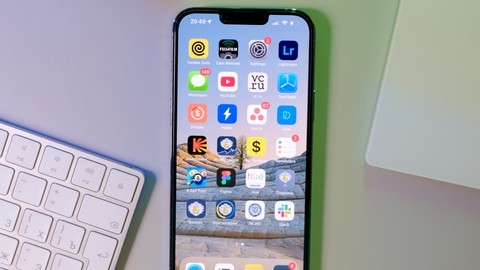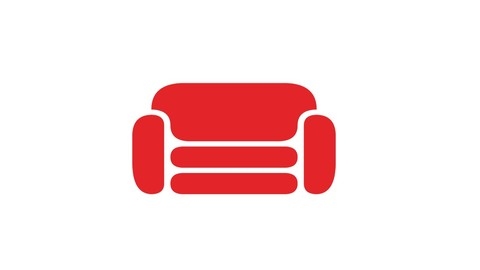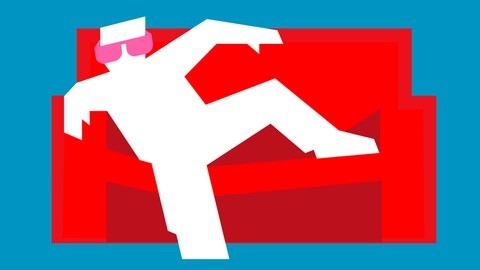Understanding CouchDB 3: Learn Basic & Advanced NoSQL Skills
This course goes from the fundamentals of CouchDB to advanced concepts like replication and clustering.
You’ll start by understanding what CouchDB is and how it differs from relational databases and other NoSQL solutions like MongoDB and Couchbase.
The course then dives into the core concepts, such as JSON documents, the REST API, and database commands like bulk operations and changes.
One of the standout features is the extensive coverage of tools like Fauxton, Futon, and Postman for working with CouchDB.
You’ll learn how to set up and use these tools for tasks like managing users, databases, and documents.
The course also covers essential topics like design documents, views, and the powerful Mango query language.
These are crucial for building real-world applications with CouchDB.
Replication and clustering are two advanced topics that are thoroughly covered.
You’ll learn how to set up replication tasks using different methods, including the REST API, design documents, and Mango queries.
The clustering section will teach you how to set up and manage a CouchDB cluster for high availability and scalability.
The course provides installation guides for various platforms, including MacOS, Windows, Linux (with options for easy Bitnami installation or manual Ubuntu/Debian setup), and even online services like IBM Cloudant.
Offline-First Apps with Angular, Ionic, PouchDB and CouchDB
The course takes you through building a complete offline-first restaurant app using Ionic, Angular, PouchDB, and CouchDB.
You’ll start with an introduction to Ionic and Angular, followed by building a simple Todo app to get familiar with the basics.
Then, the real learning begins as you dive into creating the “Julies” restaurant app.
You’ll learn how to design screens for the home page, order screen, and table overview using Ionic components.
The course covers integrating PouchDB, a JavaScript database that syncs with CouchDB, and implementing 4-way data binding to keep your data in sync across multiple interfaces.
An important concept covered is the CAP theorem and eventual consistency, which is crucial for offline-first apps.
You’ll learn how to propagate changes from PouchDB to CouchDB using an “update is better than fetch” approach.
As you progress, you’ll implement features like displaying available products, adding/removing ordered items, generating bills, and creating a kitchen view with a state machine using XState to track table states.
The course also covers more advanced topics like implementing the repository pattern, creating custom pipes for sorting, using services, debugging techniques, adding custom fonts, and implementing CRUD operations for products and tables.
To ensure code quality, you’ll learn how to generate code documentation using Compodoc and write unit tests while mocking the database for testing purposes.
Learn NoSQL Database Design With CouchDB
You will start by learning about NoSQL databases in general, including their differences from traditional SQL databases.
Once you have a solid understanding of NoSQL concepts, the course dives into CouchDB specifically.
You’ll learn how to install CouchDB on both Windows and Linux systems, and how to interact with it using cURL.
The course also covers Iris Couch, a cloud-based CouchDB service.
A significant portion of the course is dedicated to views and map-reduce functions, which are essential for querying and transforming data in CouchDB.
You’ll learn how to create temporary views using Futon, the web-based CouchDB interface.
To solidify your understanding, you’ll build a sample application using PouchDB, a JavaScript library that allows you to work with CouchDB data in the browser.
You’ll learn how to set up PouchDB, use its API, and synchronize data with a CouchDB server.
The course culminates in a project where you’ll build a CouchApp, a web application that runs directly on CouchDB.
You’ll learn how to install the CouchApp tool, create views, fetch and display documents, and implement features like creating, updating, and deleting documents.
The course also covers integrating Bootstrap with your CouchApp for better styling.
CouchDB - Mastering Database Design with CouchDB
You’ll start by understanding the differences between SQL and NoSQL databases, setting up your CouchDB environment, and learning how to use CURL and Futon, the web-based interface for CouchDB administration.
From there, you’ll dive into the core concepts of CouchDB, such as working with JSON data, creating and managing databases and documents, updating and deleting documents, and attaching files.
The course also covers essential CouchDB features like views, which allow you to query and filter your data using map and reduce functions.
One of the key strengths of CouchDB is its replication capabilities, and the course dedicates several lessons to understanding replication, eventual consistency, and how to set up replication in CouchDB.
You’ll also learn about the differences between CouchDB and other databases like MongoDB, as well as common errors and how to handle them.
As you progress, you’ll explore deployment and performance considerations for CouchDB, including configuration options to optimize your database’s performance.
Finally, you’ll put your knowledge into practice by building your first CouchApp, a web application that integrates with CouchDB.
Throughout the course, you’ll gain hands-on experience with CouchDB’s core features and learn how to leverage its strengths for building scalable, distributed applications.
Mastering Apache CouchDB NoSQL Databases
You will start by learning the fundamentals of CouchDB, including its data model and how it differs from traditional databases like MongoDB.
The course covers the key features that make CouchDB stand out, such as its HTTP API and distributed architecture.
You will gain hands-on experience installing CouchDB on both Windows and Linux systems.
The course walks you through using Fauxton, the built-in web interface, as well as cURL for interacting with CouchDB.
You’ll learn how to create and manage databases, users, and documents using these tools.
An important aspect covered is working with documents in CouchDB.
You will learn how to create, update, and delete documents using Fauxton and cURL.
This practical knowledge is essential for building applications with CouchDB.
The course also covers integrating CouchDB with popular programming languages like Java, Python, PHP, and Node.js.
You will learn how to connect to CouchDB from these languages and perform various operations, enabling you to build robust applications that leverage the power of CouchDB.
Learn CouchDB- A Beginner to Advanced Guide
You’ll start by learning the fundamentals of CouchDB, including its data model, types of databases, features, and how it differs from MongoDB.
The course guides you through installing CouchDB on Windows and familiarizes you with Fauxton, the web-based interface for administering CouchDB databases.
You’ll learn how to create, update, and delete databases and documents using both Fauxton and cURL, a command-line tool for transferring data.
Moving forward, you’ll explore how to connect CouchDB with various programming languages like Node.js, Python, PHP, and Java, enabling you to integrate CouchDB into your applications seamlessly.
The course then dives into using Postman API, a powerful tool for interacting with APIs.
You’ll learn how to perform basic operations, work with bulk commands, handle changes, manage security, and even add attachments using Postman API.
Design documents (ddocs) are a crucial aspect of CouchDB, and the course covers their creation, both in Fauxton and using Postman API.
You’ll gain an in-depth understanding of views within ddocs, starting with basic examples and progressing to more complex ones.
Mango Queries, a powerful querying language in CouchDB, is another key topic covered.
You’ll learn how to create indexes, use the find command, and work with selectors involving conditional and combinational statements, all through Postman API.
Finally, the course delves into replication, a fundamental feature of CouchDB that allows data synchronization across multiple databases.
You’ll learn how to set up replication in Fauxton and Postman API, as well as how to handle ddocs, Mango selectors, and local documents during replication.






